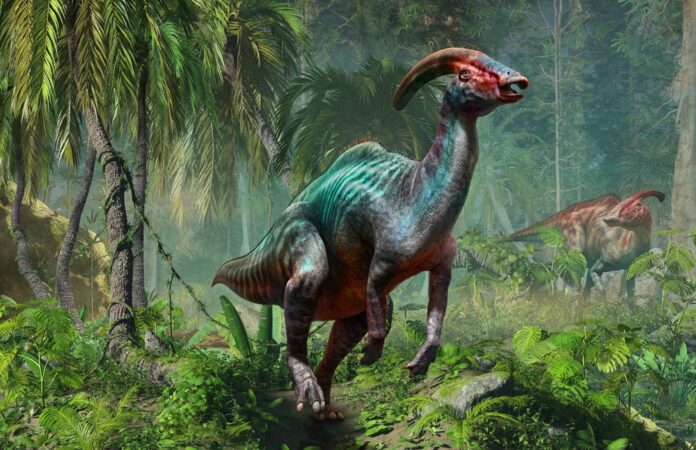When Hongjun Lin from New York University revisited the Jurassic Park films, something didn’t sound quite right. Lin, a dinosaur aficionado since his youth, was pretty sure the calls the creatures made were inaccurate. He was particularly focused on Parasaurolophus, a creature with a crest on the back of its head.
“What if I told you that the sound of Parasaurolophus in the film Jurassic Park is not true?” Lin addressed a virtual press conference before presenting a research report on how the dino probably sounded at an Acoustical Society of America conference.
What Did Parasaurolophus Really Sound Like?
It turns out that the film’s audio engineer mashed up and altered various animal sounds to come up with the creatures’ calls. For Parasaurolophus, Lin is pretty sure the sound engineer combined processed cries of baby whales and alligators.
But he wanted to recreate what Parasaurolophus — a duck-billed dinosaur with a unique crest that lived 70 million to 80 million years ago — really sounded like. Researchers have long asked similar questions.
Previous research suggested that the creature’s crested skull acted like a resonance chamber — but no one proved exactly how it worked or what it would sound like.
Read More: What Did Dinosaurs Sound Like?
Replicating Vocal Cords
Lin was determined to find out. He built a physical apparatus incorporating a series of pipes based on the structure inside the dino’s skull. He mimicked vocal cords via a machine that emitted vibrations. He set it to essentially replicate scales starting at a low frequency and gradually increased it to higher ones. The apparatus emitted sounds into a microphone and an oscilloscope monitored them.
While Lin hasn’t conclusively pegged the music from Parasaurolophus’ pipes, he was able to narrow it down to a living version of a brass instrument. “If I were to guess, it would sound like a huge coronet, a huge trumpet, a huge saxophone,” Lin says.
He admits that his apparatus represents a simple start that doesn’t necessarily account for all the physical tools Parasaurolophus might employ to talk. For instance, if the extinct animal’s calls also involved soft tissues, it might sound more like a woodwind — perhaps a massive, living clarinet.
Read More: How Scientists Reconstruct What Dinosaurs Looked Like
Refining Dino Sounds
Lin, who adds that his work is still in its early days, will next refine the sounds using mathematical models. He is drawing on the works of people who study birds that have similarly crested skulls. As he refines the sounds, he intends to create digital plug-ins for computers or synthesizers.
He’d be pleased if paleontologists use and refine his tools to emulate theoretical dinosaur sounds. He’d be fine with movie creators drawing on his techniques to make more accurate dino cries. But his personal ambition is applying them to his own music.
Lin’s hobby involves creating songs using synthesizers. He’d love to someday feature dino vocalists.
“It is really cool to have them sing in my music,” Lin says.
Read More: A Complete Dinosaur Timeline to Extinction: How Long Did They Roam Earth?
Article Sources
Our writers at Discovermagazine.com use peer-reviewed studies and high-quality sources for our articles, and our editors review for scientific accuracy and editorial standards. Review the sources used below for this article:
Before joining Discover Magazine, Paul spent over 20 years as a science journalist, specializing in U.S. life science policy and global scientific career issues. He began his career in newspapers, but switched to scientific magazines. His work has appeared in publications including Science News, Science, Nature, and Scientific American.
Source : Discovermagazine






